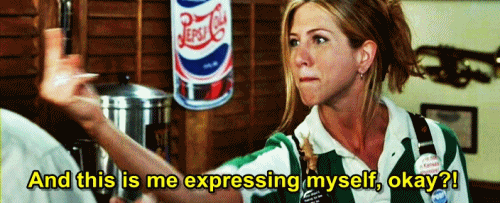The space of Food delivery (or food-tech, as the entrepreneurs describe) — at one time — managed to make the investors salivate at a rate that would have put the world’s best pizza to shame. Now? Not so much. Why? What was so great about them? And if it was, then all of a sudden what changed?
Did people stop eating food?
Did the restaurants not need the delivery support infrastructure anymore? That seems unlikely. It’s not like the concept of ‘home delivery’ is new. The local eateries have been doing it for the longest — even before your local grocer or medical store started delivering your orders to your doorsteps.
Neither the VCs, nor the entrepreneurs were wrong in seeing value in food-tech. It is a space where there is a lot of potential, highly disorganised, exceptional repeat rates (hello dear bachelors), quite localised and customised. It has everything that makes any business drool at the prospect of success. And yet, somehow it is not working out so well for these guys. Why?
You said you will deliver within 45 mins. You know what, I am done with you. Goodbye. Don’t call me again. We are SOOOO OVER!
Consumers have gotten used to getting pampered by businesses all around. Now it’s not wrong for a consumer to expect good quality and/or service, but it has slowly started getting more and more unrealistic. One mistake and you have a disaster on your hands. And you really can’t mess up with the delivery time — especially when the consumer has just gotten back from home, has had a really long, tiring and maybe even bad day at work. He is surely gonna take it out on you.

We have a order.. We have a order….We have a ORDERRRRRR….
No. He is not happy or exceptionally excited. He is freaking out. He is asking anyone who would listen to run for their lives.

Why?
Well, let’s try to think it through. Remember Domino’s 30 mins or less promise? It somehow become the standard delivery time. A business can’t afford to ask for anything more than 40–45 mins for the delivery (sure, there are some that mention 1 hour, but the percentage of even those is quite small).
Now compare that to your dine-in experience at your local restaurant. Even there you need to wait in for your food for anything between 20–30 mins after having placed the order.
At the very least, a restaurant — no matter how small or big — would need 15–20 mins to prepare your order once it has been placed. Which means 50% of the time is already lost for the delivery startup. They now have just 15–20 mins more to deliver it to your place.
The demand pattern looks like the whole Zootopia ecosystem
Did you watch the movie Zootopia? Don’t. It’s dreadful. But that’s not the point. The town that is described in the movie has FOUR different fucking ecosystems — Rainforest, desert, arctic and I don’t remember the fourth one.
Okay. I just did a quick google search and gave up as soon as I saw the first result. Apparently the city of Zootopia has 12 different and unique ecosystems. That’s it. I am outta here.
Getting back to the point, the food delivery startup suffer from a scenario not much different than that. Think for yourself. When do you order your food most of the times? Between 8pm — 10pm? Well, wouldn’t you agree so does everyone else?
So, unlike your ecommerce startups which have got the whole day to deliver the orders, the food delivery startups don’t have that luxury. And forget about your Flipkarts and Amazons of the world, even look at grocery delivery startups like BigBasket. They have different timeslots they deliver their orders in, and when you go ahead to choose a preferred timeslot, it may very well be unavailable because their bandwidth for that particular timeslot is all clogged up.
What do you do? Sure, you have the option of saying “Fuck it. I don’t wanna order from these losers”. But how often do you do that? My bet is, more often than not, you simply choose another timeslot on the same day, if it suits your schedule. If not, you just choose a timeslot from the next day.
But, put a food delivery startup in their places, and now riddle me this — Wouldn’t you be outraged if it even hinted at having something similar?
So, these poor buggers need to have the bandwidth to cater to all those orders between 9–11pm itself. That’s a tough gig, isn’t it?
Worse of all? Other than these 2–3 hours, they have all this bandwidth and not enough orders coming in to cover even 20% of that bandwidth.
Force Maejure
Everything in life where a business has to deliver within a timeframe, you would find they mention a tiny line shielding themselves from any liability caused due to forces beyond their control. Be it your creative agency that is producing the next TV campaign for you, or the pesky real estate developer who is building that first home you booked last month.
It even has a sweet little name for it — Force Majeure. Basically, factors that are beyond anyone’s control — in this case, beyond the control of the businesses. Typically reserved for natural calamities, riots etc, but do you think traffic doesn’t fall in that jurisdiction?
So, why don’t the food delivery startups make traffic conditions that big a deal? People living and working in Bangalore and many parts of Mumbai certainly know what I am talking about here. They don’t because the customer — he doesn’t care (and he shouldn’t. He hungry!). So, bottom line, the delivery business can’t really ask for a consideration here. So. Fucked!

Tip? What do you want the tip for? That is included in the bill. I don’t tip. Don’t ask anyone a tip again. You know what, I think I’m gonna complain.
Now. I don’t think there are many places where minimum wage workers, delivery staffs or such roles fall in the bracket of what you would call — Well paid! But businesses are still able to find people interested in delivering pizzas because they get tipped — sometimes quite well. A percentage of the bill is offered as a tip from the customer (paid over and above the order value).
You don’t see that here. People pay for the amount they have ordered for, and slam the door in your face. The result? It comes down on the startup to top up the basic remuneration by incentives to make sure that the taxing workload doesn’t make the employees quit.
I am not saying everyone in the US tips when a delivery is made, or that nobody in India is tipping, but sure that is what the general trend looks like. Even a 10% tip would make quite a difference.

Its all in volume — be it profits or losses
Now, we all know how Walmarts of the world work. They make a really tiny margin on most of the items that they sell. The margin is so small at a number of places that it would make you wonder why they do it at all. But the number of items they sell on a daily basis is mind boggling. And all those cents and dimes, they add up. They add up to a number sizeable enough to make it a sensible business model. Now imagine the reverse. You are losing money on every order, but the loss is small enough at first. So you think, what the hell. I can afford to bear it right now. The problem? The number of orders keep on increasing. So all those dimes and cents that you are bleeding on every single one of those orders? They add up to a sizeable number.
The average basket size for a home delivery order could be anything between $11-$20 per person in the US, UK and many parts of Europe. In India, it would be something in the range of Rs. 100-Rs.150 ($1.5-$2.5). Only a small percentage of this is what the restaurant would be willing to share with the delivery partners. So tell me, where is the money guys?
_________________________________________________
About the Author
This article was written by Abhishek Anand. You can contact him here.





























